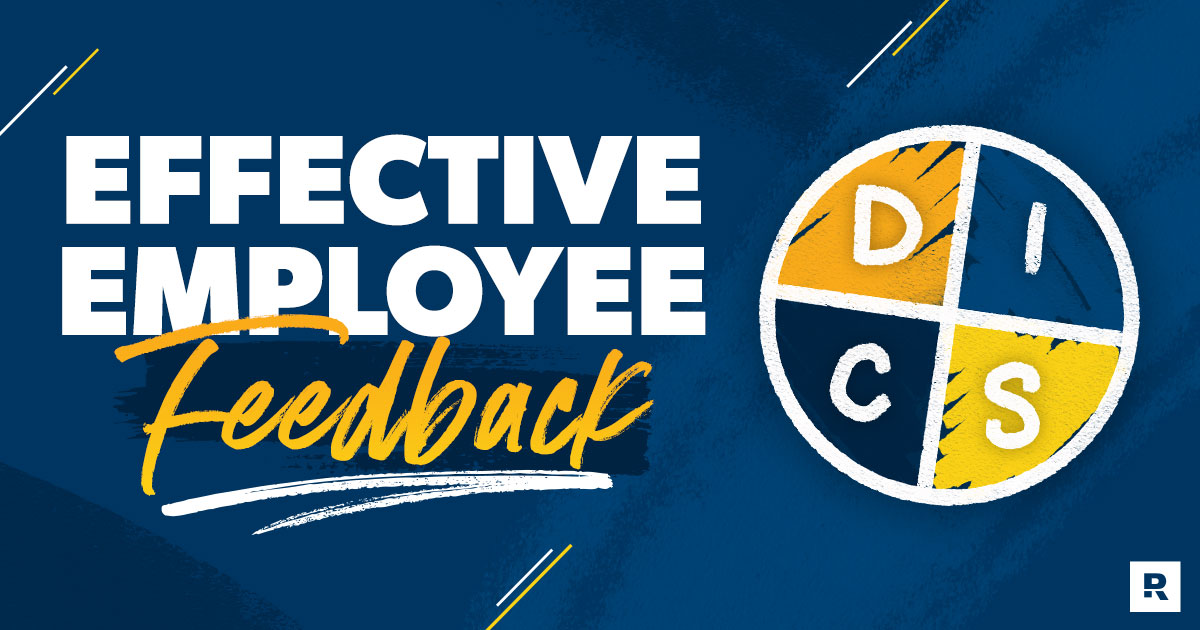
Good leaders know the people on their team. They get that everyone comes to the table with unique personality styles. If you’ve used the DISC Profile System in your business, you’ve seen this in action. The DISC is a personality assessment tool that companies can use to help their employees discover their personality and behavioral tendencies. For example, the profile shows that some people love to talk. Others dig details. Some are blunt and others hate to be rushed. And they all respond differently to your leadership. That’s especially true when you give them feedback.
Knowing how to talk to your team members based on their personalities makes your leadership style more effective. Here are the four different personality types and a few tips to lead them well:
D—Decisive Style
These people are hard chargers. They are confident and blunt. When offering them constructive criticism, you can be direct. Just get to the point. Don’t beat around the bush, don’t go off on a tangent, and don’t use a lot of fluff. They can be impatient and have a short attention span. When you talk to a D, point out more than one area that needs improvement. Why? Because these team members are laser focused and will zoom in on that one problem you’ve brought up. As a result, they’ll let other stuff fall off the radar. Also remember, D’s don’t like being vulnerable, so coaching them can be challenging at times. They won’t always like it, but they’ll listen to you.
I—Interactive Style
These employees are the social butterflies. They love being affirmed and praised. I’s like to talk, so go in with a game plan or you’ll get sidetracked. Go through the normal chat on the front end (family, weekend plans, hobbies, etc.) and then give them the feedback you have. They are afraid of disapproval, so make sure to validate them, too. Let them know you’re trying to change a behavior, not change them personally. They need to know that you still like them. Also, I’s can be disorganized and can sometimes lack follow-through, so go over your point several times and follow up in an email with the same information.
S—Stabilizing Style
These are your most loyal team members. They care about their fellow employees and like to work with others. They value your opinion, so be careful about how you offer feedback. First, talk about the good things they’re doing, and then point out the area that needs improvement. But don’t end the conversation there. Ask them for their thoughts with questions like, “What can we do?” or “How can we make . . . ?” Notice the word we. Using “we” instead of “you” helps an S feel like you’re working together. Also, if you flex your D personality too much, you could violate their trust (and that’s hard to earn back!). Schedule a follow-up meeting to check back in with them.
C—Cautious Style
These people love details and data. When you talk to them, bring examples, reports, numbers and other information to support your feedback. They may be defensive at first, but they’ll listen to your coaching if you rely on facts. Don’t play on emotions. That will backfire. Give C’s time to formulate a plan for progress and agree on a time to review. Be sure to affirm their logic and precision.
After You Give Feedback
With all team members, no matter their personality styles, do one more thing that most leaders forget—follow up! We’ve mentioned this already, but lots of leaders struggle with this. Set aside time in your calendar to circle back around within a week or so. Offer suggestions if they’re struggling with the changes.
You probably thought running a business sounded fun—until you realized it would actually run you. Discover the EntreLeadership System—the small-business road map that takes the guesswork out of growth.
Remember, you hired your team because of their skills and excellence. But no matter how capable they are, they can always grow. As a leader, you want to help them improve, because when they do, your business grows and wins. And those results are worth the time and effort it takes to give feedback!

